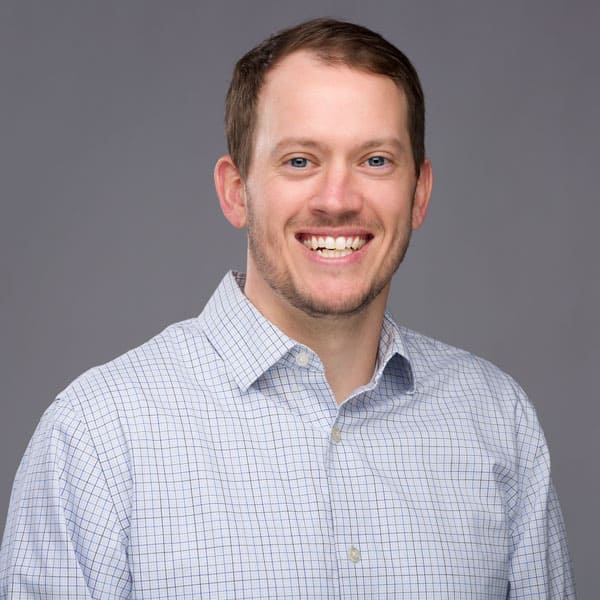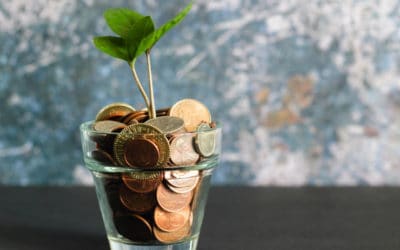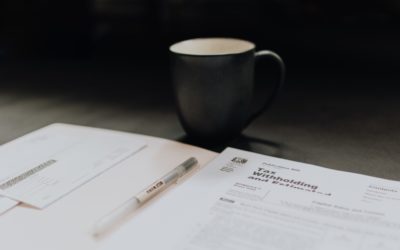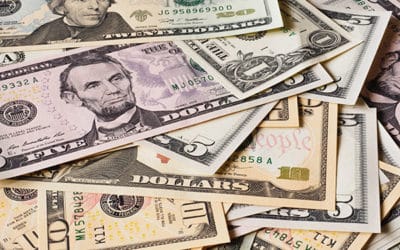“Dude, they liked it! They want to enter into a non-disclosure agreement and buy it!” Eighteen months after my partner and I came up with an invention in my specialty (and after speaking with only one company), we found someone who would consider buying it. The feeling was pretty amazing.
Given that The Physician Philosopher website is geared towards helping young medical professionals and trainees, I think it’s useful to talk about ways to supplement our incomes. After all, the more money that you generate, the more opportunity you will have to reach an early financial independence.
Side hustles help us build wealth more quickly. Earning a better income can often be done through side hustles such as locum tenens work, medical expert witness cases, incentives, and even making an invention!
Today, let’s discuss five things I’ve learned while going through the process of making a medical invention. All of this is something you should know before you consider making an invention of your own. Let’s dig in.
Number 1. You May Not Own Your Idea
It came as a surprise to me when my colleague (the one I happened to make this invention with who also happened to be married to a patent lawyer) told me that the hospital owned my idea, too. After looking into it, I was less surprised to find out that he was right.
The truth is that if you come up with an idea that is related to your work while you are at work, or if you have worked on the idea while being paid by your hospital….then it is unlikely that you can claim complete ownership.
Not two years ago, my hosptial would take home 70 to 80% of the royalties made from an invention. They “wised up” and realized this model didn’t incentivize people to create novel products and patents. Now, the hospital takes home 50% of the first $500,000 and 60% of all money after that. It’s a much better deal.
The percentage split over the money made from an invention can vary by institution. If you have an idea, you should find the policy for your hospital before you start the process. Otherwise, you might be stuck with whatever they offer if you start on the idea while working on at your workplace.
Number 2. “The only ship that won’t sail is a partnership”
I think the above quote comes from Dave Ramsey. I definitely don’t agree with everything he says, but I do agree that you need to be careful entering into a partnership with friends, family, and colleagues.
Anyone you discuss your idea with can then go and pitch the same (or similar) ideas to another company.
Additionally, expectations should be clear between you and anyone you partner with on a project. It is as simple as that. When expectations and reality aren’t similar, someone is going to be upset.
Confidentiality is also key when it comes to inventions, which is why you haven’t ever heard me describe exactly what it is that my invention does. It’s pretty cool, but you’ll just have to take my word for it. Maybe some day I’ll be able to show it on here.
Number 3. First to file
Up until March 16th, 2013 the United States was a “first to invent” country. What this idea meant is that when a person first invented something, that is when it became their idea. If they can prove when they invented it, then they own the idea at that point.
After March 16th, 2013 we are now a “First to File” country. Therefore, the above idealogy no longer holds true. The date you file the patent is the date you first truly own your idea. You read that right, and that is why number 2 above (who you tell and who you partner with) is essential.
Still, it is recommended that if you make drawings of anything that you sign and date it on the date that you created that drawing. It is best to document everything you can along the way; even if we are a First to File country.
Number 4. Making a Product-in-Hand versus an Idea in the air
Many medical companies have cut down their research and development divisions in lieu of finding ideas that have a physical presence. This isn’t always necessary, but if you can make an idea that has a physically created prototype; then that will probably have a higher chance of being purchased.
Think about it, telling someone about an idea is one thing. Putting a physical object that they can touch, and feel, and see…that’s another. They’ll understand the concept better.
This leads me into the fifth lesson that I’ve learned…
Number 5. You will need some help
There are many people involved in the process of making an invention. Let me list some of them.
First, there was my partner. He helped me smooth out some of the edges on the design and helped pitch it to interested parties. Additionally, as an added benefit, his wife is a patent lawyer, which proved helpful.
Second, there were the people we needed to convince to spend money on developing our idea. This includes leadership in our innovations section at the hospital. This was where we had to explain the problem that needed to be solved, and draw out on a napkin how we were going to solve it.
Third, we had to meet with the engineers who produced the first prototype. And the second. And third. They had the PhD engineering knowledge to perform 3-D injection molding, but needed the medical knowledge to know what was helpful and what was not. This was, by far, the most enjoyable aspect of the experience. Thinking outside the box has always been fun to me.
Fourth, there were the sales people who were responsible for finding a possible buyer. They did the grunt work to see if any of their contacts were interested and arranged the meetings. Glad I didn’t have to do this.
Fifth, the patent lawyers. They filed our provisional patent. This work required them to write down in words what our invention does in real life. And make the description specific (and broad) enough to capture all of its parts in case someone thought of something similar.
As you you can probably tell from this list… creating an invention involves a lot of people. This goes to show that point number 1 is essential.
Take Home
There were a lot of people paid for or employed by my hospital that allowed this all to happen. Without them, I would have had to front the capital for all of these individuals myself, including finding them all. I am glad to give up a large chunk of my profits to have had these resources available to me.
While creating an invention can be a beneficial path to side income, it can be a treacherous road if you learn some of these lessons the hard way.
In the end, I found the process a long, but worthwhile endeavor. I really enjoyed creating something that fixed a specific problem. If I stand to make a profit from it, that’s all the better.
Have any of you gone through the innovative process? How did it go? Did you get shut down? Did opportunities arise? What difficulties and accomplishments have you had? Leave a comment below.
TPP





I think it’s amazing that you invented a medical device during residency. I wish I was more creative and innovative. I totally think you should continue to write about this because it’s a topic that is rarely covered.
Thanks for the encouragement! I’ll keep it going. Once I have a non-provisional patent I can discuss it a little more freely. The specific device I mean.
It’s been two years coming now.
Very interesting TPP. So do you get royalties from the invention? That would be a nice passive income. I’m not smart enough to invent anything.
Yep. Hopefully get an initial payment , too, for the license.
I am pretty excited about it
Creating your own product sounds difficult. Good job! I would love to hear more.
Yeah man! We will talk about it sometime.
Awesome post! There are thousands of problems in medicine that can only be solved by an expert insider. I invented a Stylet in 2014 and created a prototype. The problem came when my researchers found a very similar patent and product. Even though it was different it didn’t make sense moving forward since it didn’t add a 10x difference to the marketplace. It was a great learning experience. Congrats on the invention!
Thanks!
It really has been interesting learning all the different parts that are involved along the way. I suppose I’ll keep writing about it since it’s been well received.
Sorry to hear there was a similar patent out there. That happened to me on another idea I had. Interestingly, nothing ever happened with it… But I still think it’s a great idea. May have to pursue it later (maybe even purchase the patent).
Are you able to share any details about your invention? Was it medical related and did you have to deal with the FDA?
Unfortunately, I cannot share anything at this time other than to say it is medically related, patented, and anyone I discuss it with has to sign a non-disclosure agreement (NDA) with my hospital where I am employed.
As soon as it’s licensed and I am allowed to talk about it, there will be a post! It’s been two years so far into the process.
I agree that if you have an idea for an invention that you think will benefit your patients you should pursue it. There is nothing more exciting than spontaneously coming up with an idea, and visualizing its patient benefits and making it become a reality . It’s an adventure all along the way and the steps taken to achieve the goal are essentially four. 1. Have a concept. 2. come up with a prototype. 3. See if it has practical merit. 4. seek a manufacturer who will produce it . There are different arrangements that can be worked out with manufacturers to reduce your financial commitment . The best for young physicians is the Royalty arrangement. Once these steps have been initiated then you can seek a patent. Mailing a dated letter describing your idea to yourself will give you initial protection against infringement.
When I was a resident in Plastic Surgery in 1963, I saw how limited Cineradiography was in visualizing the speech mechanism during speech in cleft palate patients and additionally exposing children to sustained radiation during the X ray procedure was something to be eliminated. I came up with the idea of using an endoscope with a distal light source to be inserted orally into the posterior pharynx to visualize the muscles of the palatal closure mechanism while the patient made speech sounds around the scope at the same time.
I used a McCarthy urethroscope at first, to see if I could see anything and lo and behold I could see under limited conditions of light and a poorly angled lens the movements of the soft palate and lateral pharyngeal muscles during speech that were not the shadowy images of a filmed x-ray, but a direct observation of the speech mechanism. My heart quickened and I set about to come up with the right endoscopic device. I consulted with a noted Gynecologist who was using an endoscope to make intra abdominal observations and diagnoses of diseased ovaries and other conditions. He told me of a company who made his device, with a superior optical system and distal light source for adequate illumination. The Company was National Electric, a division of Engelhard Hanovia. I called them to speak to their chief engineer and made an appointment to put forth my proposal. I knew exactly what I wanted, a right angled lens and distal light source. The meeting was very positive. They told me they could make such a device, with a superior lens system that was based on an industrial boroscope, used to inspect jet engines, and would have one completed in a month. We discussed all the details and finally a royalty arrangement whereupon I would not have to pay any money up front but I would have to sell 95 instruments before I could collect a royalty of 5% of gross sales. I happily agreed and was thrilled that my idea was soon to become a reality. When National Electric had made the first device, they presented it to me in a wooden walnut box with the a printed label entitled “The Taub Oral Panendoscope.” which was quite an unexpected thrill. Within the box was a rotatable stainless steel optical tube with a superior wide field lens system, right angled distal lens, and a heat shield fitted around a distal light bulb. A graduated power transformer was supplied to illuminate the tiny bulb. An additional feature on the device was that the optical tube was rotatable 360 degrees so you could visualize the larynx looking downwards and the entire speech mechanism looking upwards while he patient made vowel and plosive sounds. The proximal lens attachment could be mounted to a 16 mm camera C mount lens and color movies could be filmed with a movie camera like a Bolex . The final result was my presentation at a 1964 cleft palate convention where I showed simultaneous action split screen images of cineradiography adjacent to panedoscopic color films of the speech mechanism. The contrast was so extreme that after my presentation there was a mob rush up to the stage by the audience demanding to know where they could purchase the panendoscope. I published my findings in the 1964 Cleft Palate Journal and used my photos for my case presentations to become board certified in plastic surgery. The Taub oral Panendoscope was successfully used as a diagnostic tool in many Cleft plate centers throughout the USA and Internationally.
When coming up with a medical invention or any invention you have to visualize the goal as the end that justifies the means and as you go along the you will find answers to questions that you never initially imagined. Trust in your inner creativity to provide those answers and often they will not be found in the medical field but in technology outside the box, to be adopted for your needs. I will be happy to give advice to anyone venturing into the field of invention having obtained 7 patents on my own. I am now retired from plastic Surgery and my inventions now entirely provide my income and sustain my way of life which is a joy.
Stanley Taub, MD
465 West Broadway, New York NY 10012
212 832 7505
It’s good to know that you should have someone to help with the design and if it will work. I’m wanting to build an app for doctors that help them identify problems with each other. I’ll have to find some help to see if my idea is viable and worth going through.
I thought it was interesting when you mentioned that it is important to convince people to spend money on your invention when you are trying to develop one. When you are trying to find funding for research, I would think that it would be important to write a proposal that is thoroughly detailed. You would want to provide a lot of details so that the investors can know what your invention is going to do.